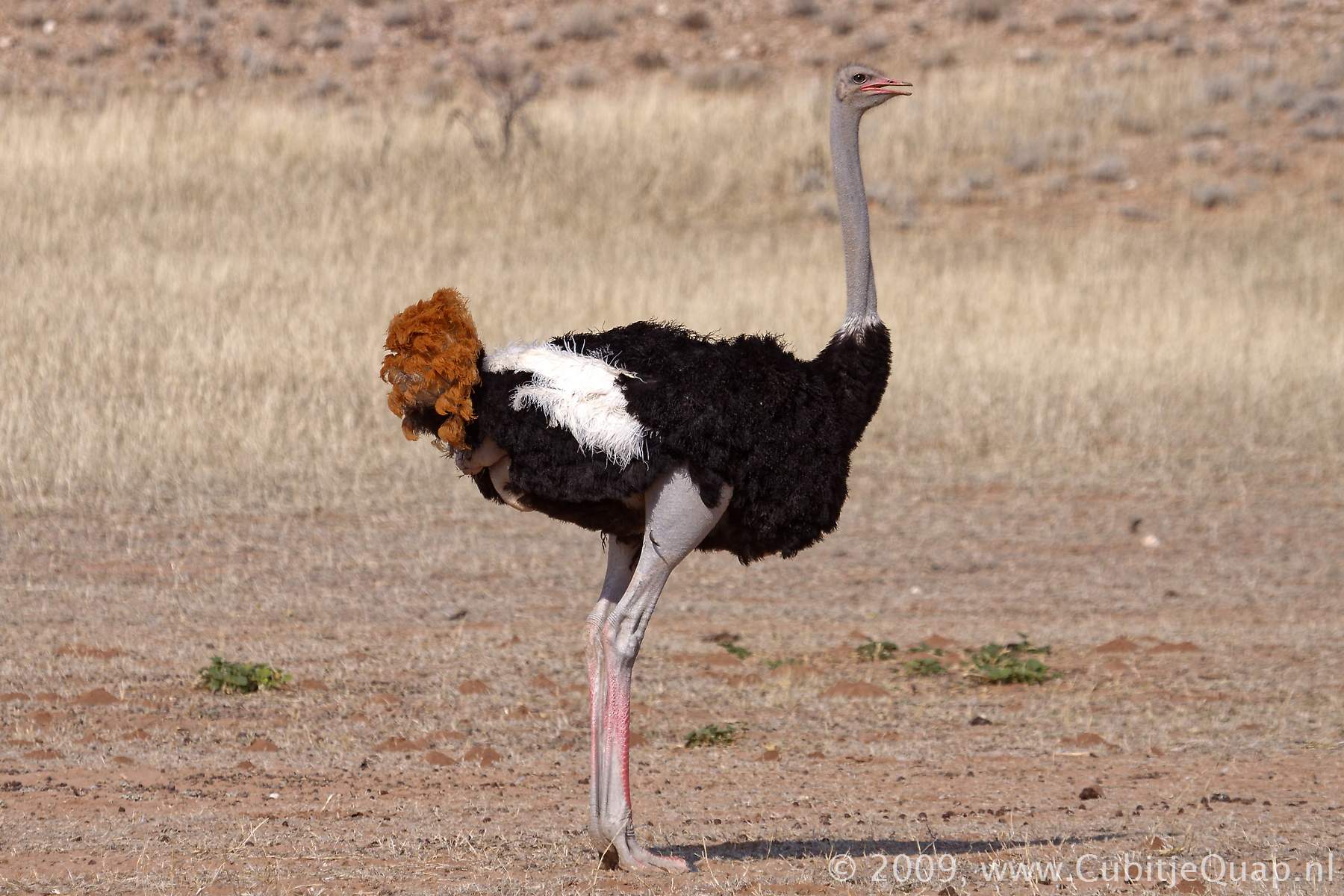Ostriches Information page
Description
Largest and heaviest living birds, they can weigh up to 150 kg and reach more than 2 metres in height. They are flightless, but capable of running up to 50 km/h.Body with soft loose feathers lacking barbules, instead the feathers have a loose-knit surface that is useful for trapping air that acts as insulation, which is useful in their arid, hot habitat.. Unlike most birds, males have a large penis, up to 40 cm, but usually folded away. The foot has two toes, the inner toe has a long nail that can be used in fighting and defence and for scraping the ground for a nest site or to unearth food items.
They roost and nest om the ground. The dominant male usually takes a number of mates (polygyny), all of which lay their eggs in the same nest-scrape, but only the dominant, or apha, female shares the incubation with the male.
males perform an interesting courtship display called 'kantling', wjhereby they squat down and they sway from side-to-side while fanning and quivering outstretched wings. The male makes the nest scrape alone and then shows it to the females. The first femal to accept the nest, by laying an egg, becomes the dominant female. She positions the eggs of the other females on the outer edge of the nest to ensure her own eggs are incubated stronger and are in less risk of predators.
The chicks hatch synchronously and the adults form a co-operative unit with helpers to brood, protect and help youngsters to feed. Chicks stay under adult supervision for at least nine months, which may be spent in creches of up to fifty, or more, birds of different ages.
Scientific names
Struthio = an ostrichBirds in this category
Interesting links
Wikipediafatbirder.com

